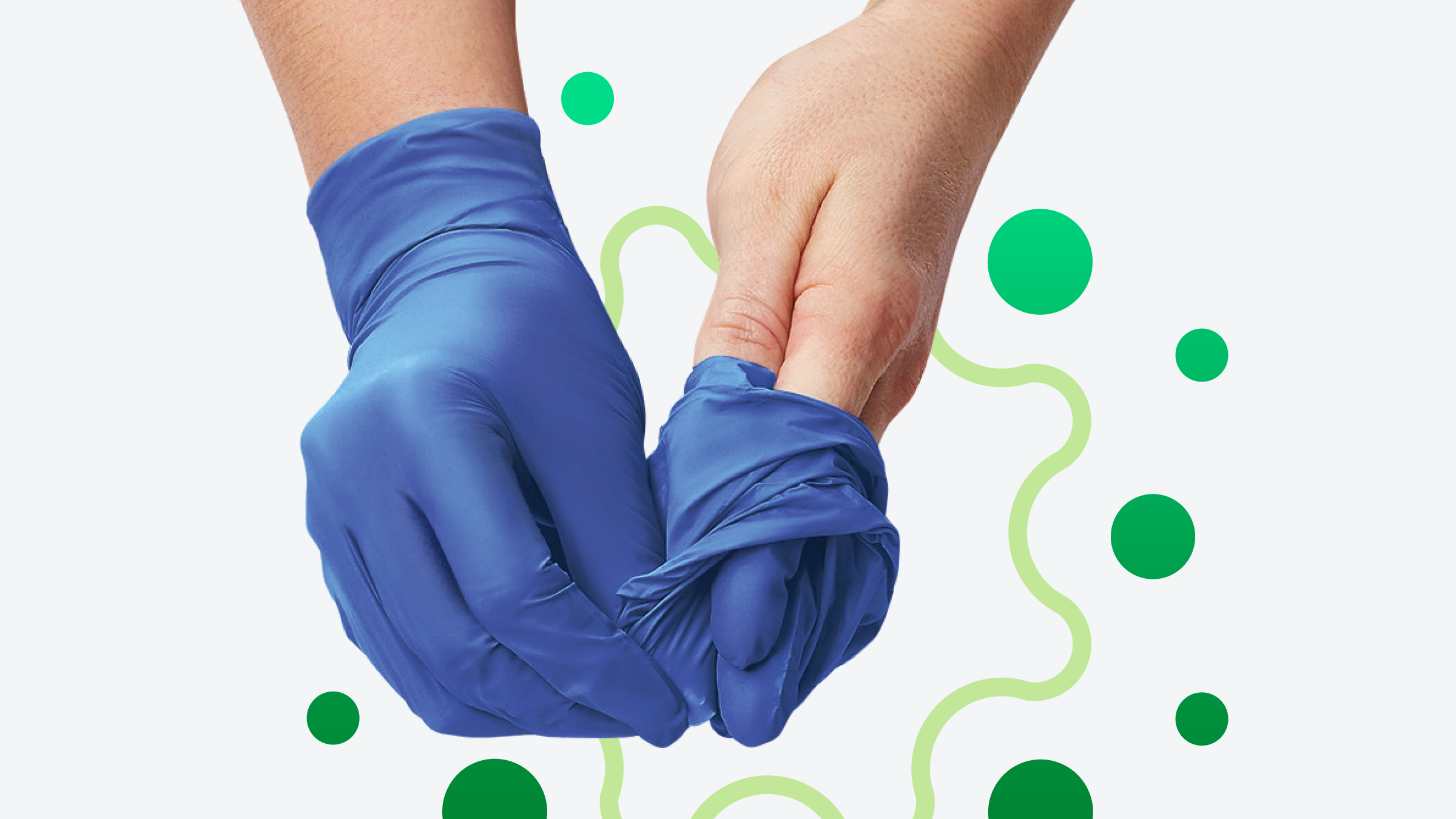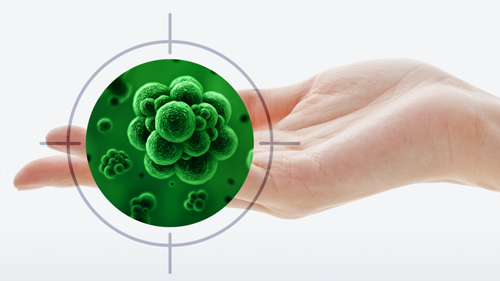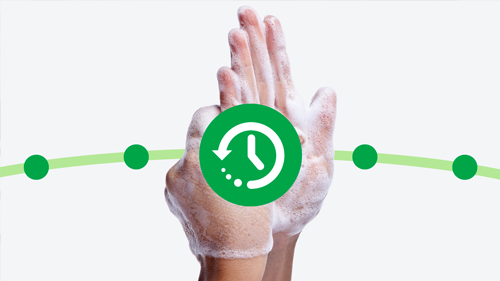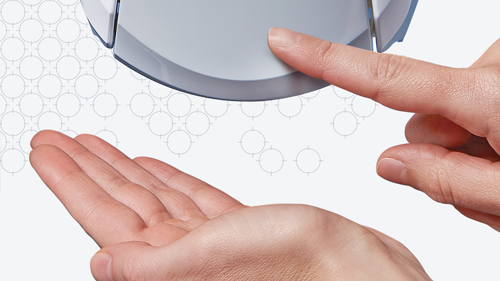Why are exam gloves a vital part of hand hygiene protocol?
Learn how proper glove use protects caregivers and patients/residents.

Proper glove use, like appropriately cleaning and sanitizing hands, plays a vital role in protecting patients, residents and healthcare workers, and therefore must be included in hand hygiene training and education. But where to start, given the variety of gloves used in healthcare? Non-sterile, single-use (disposable) exam gloves is a good place.
Know that gloves are not a substitute for clean hands
Wearing gloves does not replace proper hand hygiene practices and should be used according to accepted guidelines. This means that using an alcohol-based hand sanitizer before donning gloves is essential to ensuring that no other gloves become contaminated when a healthcare worker takes them from the storage dispenser.
Follow guidelines and recommendations for wearing and removing gloves
The Centers for Disease Control and Prevention (CDC), the World Health Organization (WHO), and the Occupational Safety and Health Administration (OSHA) all recommend glove use during a procedure or task when contact is likely. This includes:
- With blood or bodily fluids
- With mucous membranes
- With non-intact skin
- With other potentially infectious materials
- When handling or touching contaminated equipment or surfaces
While gloves protect the healthcare worker, they also pose a risk if not removed when they become contaminated. Knowing when to remove or change gloves is just as important as when to wear them. The CDC, WHO and OSHA all have specific recommendations for properly donning and removing gloves, and all should be factored into a complete hand hygiene training and education program:
CDC recommendations
- Remove gloves after caring for a patient or resident
- Do not wear the same pair of gloves in caring for more than one person (never wash gloves between patients or residents—they must be changed)
- Change gloves when moving from a soiled body site to a clean body site on the same patient or if another clinical indication for hand hygiene occurs
- Carefully remove gloves to prevent hand contamination
WHO recommendations
- Change gloves as soon as they’re damaged or suspected of being damaged
- Change gloves when contact with blood, other bodily fluids, non-intact skin or mucous membranes has occurred and ended
- Change gloves when handwashing or sanitizing is necessary
OSHA recommendations
- Change gloves as soon as is practical when they become contaminated, torn or punctured
- Change gloves between patients or residents regardless of the gloves’ condition
Avoid common usage errors
The most common errors in glove use include wearing them for long periods of time, wearing them when there is no indication for exposure to blood or bodily fluids, etc., and wearing them with jewelry. Prolonged use and overuse of gloves also pose a risk and can lead to transmission of infectious pathogens.
Gloves should not be worn when there is no potential for exposure to blood or bodily fluids, mucous membranes, non-intact skin or contaminated environmental surfaces. Jewelry should never be worn during care tasks, with or without gloves, or while properly cleaning and sanitizing hands.
Prolonged use and overuse of gloves also pose a risk and can lead to transmission of infectious pathogens.
Keep skin healthy
Occupational dermatitis is a common issue among healthcare workers. High frequency hand hygiene can potentially remove protective lipids from the skin, making it prone to dryness and irritation. This increases the risk of bacterial colonization and can lead to the spread of disease-causing pathogens.
Proper and frequent use of a latex- and nitrile-compatible lotion, especially at the start and end of the shift, along with the use of gloves manufactured with therapeutic additives such as oatmeal and aloe are two ways to reduce the risk. These products also help soothe and recover hands that are dry, chapped and irritated.
Remember glove size is important
Selecting the right size glove is essential to proper protection. In general, gloves should cover the entire hand and wrist, feel snug without being too tight, and allow full movement of the hand and fingers.
Like most things, one size does not fit all. Common disposable gloves range in size from extra-small to extra-large. Be sure to follow the manufacturer’s guidance on how to properly fit each healthcare worker in your facility.
Steps to take—now
- Review your facility’s hand hygiene training and education and be sure that proper glove use is adequately covered, including demonstrations of proper donning and doffing techniques.
- Use direct observation not only for measuring hand hygiene compliance but also proper glove use adherence, taking the time for interventional feedback when errors occur. Make unit leadership responsible for proper glove use by all frontline workers.
- Foster a psychologically safe culture where healthcare workers are encouraged and feel empowered to point out to colleagues and superiors without repercussions when they miss a hand hygiene step or have done something improperly.
Proper use of gloves is often taken for granted, but attention to all the details surrounding
it—when, why and how to use them—is essential for the prevention of healthcare-associated infections and the overall safety of everyone in your facility.

VP Patient Safety Innovation for Medline Industries, LP
Paul invented the first electronic hand hygiene monitoring system designed to improve hand hygiene performance while reducing infections and costs. He is an innovative and mission-driven leader with more than 35 years of experience in hand hygiene and patient safety solutions. Paul also shared hand hygiene insights as a past contributor to Healthcare Hygiene Magazine.
Disclosure: Medline was a 2021 member of the Leapfrog Partners Advisory Committee and has a collaborative relationship with a company that offers electronic hand hygiene monitoring services.




